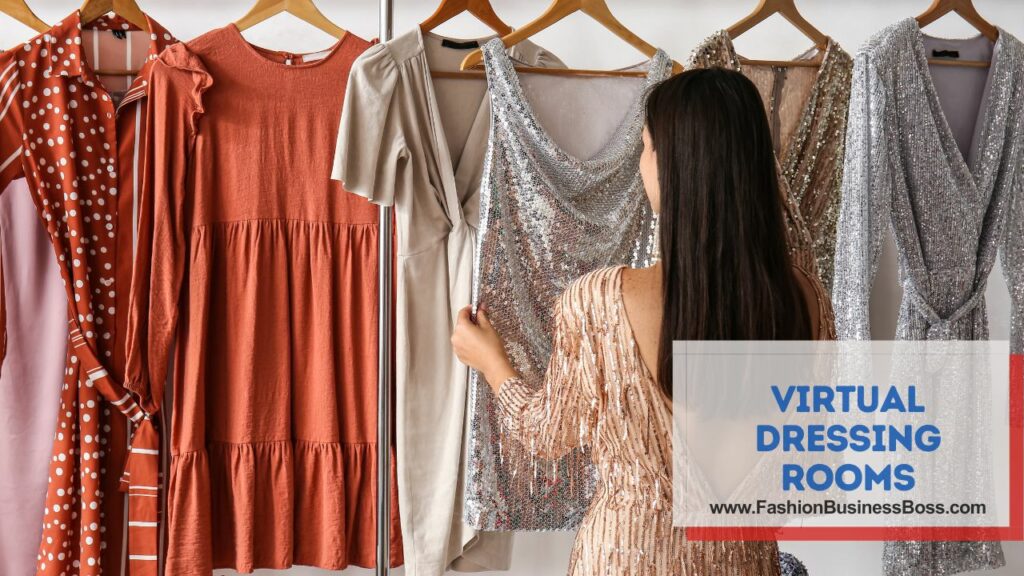Are you looking to earn money from the comfort of your home? With the rise of online platforms and the ever-growing popularity of e-commerce, selling clothes remotely has become an excellent way to generate income.
To thrive in remote clothing sales, choose the right platform, curate impeccable inventory, prepare clothes meticulously, capture high-quality images, craft compelling descriptions, set competitive prices, and stay attuned to fashion trends.
In this article, we will guide you through the steps to effectively sell clothes from home.
Choose Your Selling Platform

When it comes to selling clothes from the comfort of your home, one of the first decisions you’ll need to make is choosing the platform where you’ll list your items. There are several options available, each with its own advantages and limitations.
One popular choice is eBay, known for its wide reach and variety of items. Another option is Etsy, which caters to a creative and handmade niche. Poshmark is a platform specifically designed for fashion, while Shopify allows you to create your personalized website.
Consider the costs associated with each platform. eBay, for example, charges fees for listing items and takes a percentage of the final sale price. Etsy also has listing fees and takes a commission. Poshmark charges a flat fee for items sold under $15 and a percentage for higher-priced items. Shopify has a monthly subscription cost.
Before deciding, evaluate your unique goals and aspirations. Think about your budget and how much you’re willing to invest in fees. Research the platform that aligns most closely with your vision, and you’ll be on your way to sell clothes from home.
Read more about: Pioneering Your Clothing Brand: The First Steps
Gather Your Inventory
Next, let’s talk about gathering the clothes you plan to sell from your own collection. Take a good look through your wardrobe and select the pieces you’re ready to part with. It’s important to make sure these clothes are in great shape, without any significant flaws or damage.
Why does this matter? Well, the quality of the clothes you sell has a big impact on keeping your customers satisfied and getting positive feedback. It forms the foundation of your remote clothing-selling venture.
Now, let’s consider the costs involved. You might need to invest some money in this step. If any of your clothes need cleaning, think about the cost of dry cleaning or washing. If they’re wrinkled, you might have to spend a bit on ironing or steaming. These expenses are important to keep in mind because they affect your overall profit.
So, before you start listing your clothes, ensure they are in excellent condition. This attention to detail sets the stage for a smooth customer experience and can lead to positive reviews, which are crucial for building your reputation as a seller.
Prepare Your Clothes
This part of the process is about making sure your clothes are in the best possible condition to attract potential buyers. First and foremost, you should pay attention to cleanliness. If any of the garments you intend to sell are dirty or have stains, consider the cost of cleaning. Depending on the item and its condition, this could involve anything from simple machine washing to professional dry cleaning. The expense of cleaning is something to keep in mind as it will affect your overall budget and potential profit.
Take the time to address wrinkles or creases in your clothing items. This might require investing in an iron or a steamer. These tools can help ensure your clothes look neat and well-presented in the listing photos, which can be a key factor in attracting buyers.
Preparing your clothes involves making them look their best so that potential buyers will be more inclined to purchase them. This attention to detail can contribute to a positive experience for your customers and ultimately help you achieve your goals as a remote clothing seller.
Photography Matters: Capturing Your Clothes

Good quality images play a crucial role in attracting potential buyers and making your listings stand out. In terms of cost, you may need to invest a bit in this step. To capture your clothes effectively, consider the need for good lighting. Natural light is often the best choice, but if that’s not available, you might need to purchase affordable lighting equipment. This cost should be factored into your budget.
When taking photos, focus on presenting your clothes in the best possible way. Clear, well-lit images help potential buyers see the details and condition of the garments. Make sure the background of your photos is uncluttered and doesn’t distract from the clothing. You may also need a decent camera or smartphone with a good camera for this task.
The key here is to create an appealing visual presentation for your clothing collection. High-quality images will give your potential buyers a better understanding of what they’re considering, increasing the likelihood of a sale. So, while there may be some initial expenses, good photography is an investment that can pay off in the long run.
Read more about: Price It Right: Boutique Clothing Pricing
Crafting Compelling Descriptions
Let’s delve into the art of crafting descriptions for the clothes you aim to sell from your home. Descriptions are your way of communicating the details and appeal of your garments to potential buyers, and they play a vital role in helping buyers make informed decisions.
As for costs, this step doesn’t involve direct expenses, but it does require your time and effort. Crafting compelling descriptions entails using words effectively to paint a vivid picture of each piece. Honesty is crucial here; be transparent about the item’s condition, size, and any imperfections. Clear and concise language should be your guide.
The goal is to go beyond a mere listing and create a narrative that captivates your audience. Share the unique features of each garment, such as its style, color, and fabric. Help potential buyers visualize themselves wearing the clothes by using descriptive phrases that evoke a sense of wearing the item. Your words should transport them from the digital realm into a world of possibilities.
Crafting compelling descriptions is about being informative, honest, and engaging. These descriptions serve as a bridge between your clothes and the potential buyers, guiding them toward a confident purchase decision. While it doesn’t involve direct costs, the time and effort you invest in this step are essential for your online clothing-selling endeavor.
Setting the Right Price
Pricing is a crucial aspect of your selling strategy that directly impacts your potential earnings and buyer interest. When considering costs, it’s important to remember that the right price can vary depending on several factors. You may need to do some research to gauge the market and understand what similar items are selling for. This information can help you make an informed decision.
Balancing your pricing strategy is like finding a sweet spot. You want to set a price that attracts potential buyers while also ensuring you cover your costs and make a profit. Take into account factors like brand recognition, the condition of your clothes, and their original value when determining your prices.
It’s worth noting that starting with slightly competitive prices can help draw initial interest, especially if you’re new to selling. Over time, you can adjust your prices based on buyer feedback and market trends.
Setting the right price involves careful consideration of various factors, including market research, item condition, and your profit goals. While there might not be direct expenses in this step, making thoughtful pricing decisions is essential for an clothing-selling venture from your home.
Virtual Dressing Rooms: Offering Try-Before-You-Buy Experience

A unique addition to your online clothing-selling venture that can enhance the shopping experience for potential buyers. When it comes to costs, implementing virtual dressing rooms can vary in expenses. Some platforms offer built-in virtual try-on features, while others may require you to invest in software or services. It’s important to weigh these costs against the potential benefits.
Virtual dressing rooms allow customers to virtually try on clothing items before making a purchase. This interactive experience not only sets your venture apart but also instills confidence in buyers. They can see how a garment looks on them without physically trying it on, reducing uncertainty and increasing the likelihood of a sale.
While not all sellers may choose to implement virtual dressing rooms due to costs or technical considerations, it’s a feature that can greatly enhance the customer experience. By allowing potential buyers to engage in a try-before-you-buy process, you create a more immersive and reassuring shopping environment, potentially leading to increased sales and satisfied customers.
Read more about: Price Points and Ponderings: Wholesale Clothing Insights
Strategic Marketing and Promotion
Effective marketing is crucial for reaching potential buyers and growing your business. When it comes to costs, marketing expenses can vary widely depending on your approach. Utilizing social media platforms and blogs is often cost-effective, while partnering with influencers or running paid advertising campaigns may incur additional expenses. It’s essential to set a budget and stick to it.
Your marketing strategy involves a well-thought-out plan to amplify the visibility of your clothing listings. Utilize social media channels, create engaging blog content, and consider collaborating with influencers who align with your niche. These efforts combine to create a symphony of exposure, drawing potential buyers into your online store.
Consistency is key in maintaining an active online presence. Regularly posting about your clothing items, sharing customer reviews, and interacting with your audience can help nurture interest and trust.
Strategic marketing and promotion involve using various channels to reach your target audience. While there are costs involved, careful budgeting and a well-executed plan can help maximize the impact of your marketing efforts, ultimately driving more traffic to your online clothing store and increasing the likelihood of making sales.
Handling Orders and Shipping
Once customers start placing orders, efficient and dependable shipping becomes paramount. In terms of costs, shipping expenses can vary depending on factors like the weight and size of your packages, the shipping method chosen, and the destination. It’s essential to calculate these costs accurately to ensure they align with your pricing strategy.
Efficiency in this phase involves managing the process smoothly. Offer a range of shipping choices to cater to different customer needs and preferences. Clearly communicate estimated delivery timeframes to customers, and strive to meet these expectations.
Prompt and reliable shipping is not only about getting merchandise to customers quickly but also about building a trustworthy reputation as an online seller. It’s a critical part of customer satisfaction, which can lead to positive reviews and repeat business.
Handling orders and shipping involves efficiently managing the process of getting your sold items to customers. While there are costs involved, careful planning and communication can help ensure a smooth and reliable shipping experience, which is essential for maintaining a positive reputation in your home-based clothing selling venture.
Customer Service Excellence

Exceptional customer service is the cornerstone of building trust and fostering lasting relationships with your buyers. In terms of costs, while customer service itself may not have direct expenses, it does require an investment of your time and attention. Being responsive and attentive to customer inquiries and concerns is crucial for a positive shopping experience.
To excel in customer service, respond promptly to customer queries with professionalism and courtesy. Address any concerns or issues with empathy and a commitment to finding a solution. It’s essential to maintain a respectful and helpful demeanor in all interactions.
These interactions with customers extend beyond mere transactions; they are an opportunity to build a loyal customer base. When customers feel valued and well-treated, they are more likely to return for future purchases and recommend your store to others.
Customer service excellence involves providing attentive and respectful support to your buyers. While it doesn’t have direct costs, it does require your time and effort. Investing in exceptional customer service can lead to customer satisfaction and loyalty, contributing to the growth and reputation of your home-based clothing selling business.
Read more about: Ready to Retail: A Guide for Clothing Entrepreneurs
Managing Returns and Exchanges
Handling returns and exchanges effectively is vital to ensure customer satisfaction and maintain a positive reputation. When it comes to costs, while managing returns and exchanges may not have direct expenses, it’s essential to consider potential costs associated with return shipping or providing replacement items. These costs should be factored into your overall budget.
To manage returns and exchanges, establish a clear and transparent policy that outlines the process for customers. Make sure it’s easily accessible on your online store. When a customer requests a return or exchange, respond promptly and professionally, providing instructions on how to proceed.
Efficiency in this aspect involves processing returns and exchanges swiftly and fairly. Inspect returned items to determine their condition and eligibility for resale. Ensure that customers receive refunds or replacements as per your policy, and communicate with them throughout the process.
The goal is to turn a potentially challenging situation into a positive customer experience. A well-handled return or exchange can leave a lasting impression, potentially leading to repeat business and positive word-of-mouth.
Monitoring and Adapting to Trends
When considering costs, this step does not involve direct expenses, but it does require an investment of your time and effort. You should be willing to dedicate time to research and staying informed about the latest fashion trends.
Monitoring trends means keeping an eye on what styles, colors, and designs are currently popular. This knowledge allows you to curate your clothing collection to align with these trends, making your offerings more attractive to potential buyers.
Adapting to trends involves adjusting your inventory based on what’s in demand. You may need to add new items that reflect current trends or update existing listings to match evolving preferences.
Conclusion
Selling clothes remotely is a viable way to earn money from home. By following the steps outlined in this article, you can establish an online clothing business and enjoy the flexibility of working on your terms.
Frequently Asked Questions (FAQs)

Is it possible to sell both new and used clothes online?
Absolutely! Many platforms allow the sale of both new and gently used clothing items.
Do I need to have a lot of technical knowledge to set up an online store?
Not necessarily. Many e-commerce platforms offer user-friendly interfaces that make it easy to set up your store without advanced technical skills.
What is the best way to promote an online clothing store?
Utilize social media platforms, collaborate with influencers, and consider running online ads to increase your store’s visibility.
To learn more about starting your own clothing business, check out my startup documents here.
The information provided by FashionBusinessBoss.com (“The Site”) is for general informational purposes only. All information on the Site is provided in good faith, however, we make no representation or warranty of any kind, express or implied, regarding the accuracy, adequacy, validity, reliability, availability or completeness of any information on the Site. Under no circumstance shall we have any liability to you for any loss or damage of any kind incurred as a result of the use of the Site or Reliance on any information provided on the Site. Your use of the Site and your reliance on any information on the Site is solely at your own risk. This blog post is for educational purposes only and does not constitute legal advice. Please consult a legal expert to address your specific needs. Terms and Conditions. (https://fashionbusinessboss.com/terms-and-conditions/)

Meet Shawn Chun: Entrepreneur and Fashion Business Fan.
I’m a happy individual who happens to be an entrepreneur. I have owned several types of businesses in my life from a coffee shop to an import and export business to an online review business plus a few more and now I create online resources for those interested in starting new ventures. It’s demanding work but I love it. I do it for those passionate about their business and their goals. That’s why when I meet a designer or boutique owner at a craft fair, farmers market, retail location or anywhere else I see myself. I know how hard the struggle is to retain clients, find good employees and keep the business growing all while trying to stay competitive.
That’s why I created Fashion Business Boss: I want to help fashion business owners like you build a thriving business that brings you endless joy and supports your ideal lifestyle.

